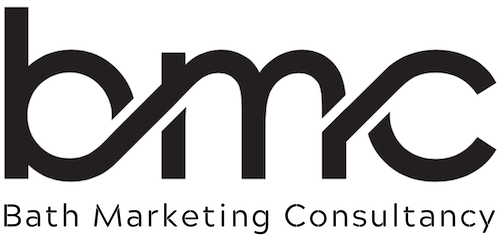A Search Engine Glossary helps simplify the often confusing world of digital marketing by explaining the many acronyms and technical terms professionals use every day. For business owners and marketers aiming to strengthen their online presence, this glossary acts as a valuable reference to understand essential concepts related to SEO, PPC, and digital analytics. By learning the definitions and practical meanings behind these terms, you can better navigate marketing discussions, make informed decisions, and apply strategies that improve your visibility and performance across search engines.
To help, we’ve put together a glossary of key search engine marketing (SEM) terms, breaking down what they mean and how they’re used.
What is SEO (Search Engine Optimisation)
SEO, or Search Engine Optimization, is the process of enhancing a website so it appears higher in search engine results. This involves refining various elements such as the quality and relevance of content, the technical performance of the website—including speed, structure, and mobile compatibility—and the strength of inbound and outbound links. The ultimate goal of SEO is to attract more organic, or unpaid, traffic by making the site more visible and appealing to both search engines and users.
📌 Example: Using relevant keywords and creating high-quality content to help your website appear on page one of Google.
What do you mean by SEM (Search Engine Marketing)
Search Engine Marketing (SEM) is a comprehensive approach to improving a website’s visibility in search engine results by combining both organic and paid strategies. It encompasses Search Engine Optimization (SEO), which aims to enhance a website’s natural rankings through content, keywords, and technical improvements, as well as Pay-Per-Click (PPC) advertising, where businesses pay to appear prominently in search results. Together, these methods work to attract more traffic, increase brand exposure, and reach potential customers effectively.
📌 Example: Running a Google Ads campaign while also optimising your website for organic search.
What is PPC (Pay-Per-Click)
PPC, or Pay-Per-Click, is an online advertising model in which advertisers are charged only when a user clicks on their advertisement. This approach allows businesses to target specific audiences and drive traffic to their websites while paying solely for actual engagement. PPC is widely utilized across platforms such as Google Ads and various social media networks, enabling advertisers to reach potential customers efficiently and measure the performance of their campaigns.
📌 Example: A company bids on the keyword “best accountants in London” and only pays when someone clicks their ad in Google search results.
What do you understand by term SERP (Search Engine Results Page)
SERPs, or Search Engine Results Pages, are the pages that appear when a user types a query into a search engine. They display a combination of results that can include organic listings generated by the search engine’s algorithm, paid advertisements placed by businesses, and special features such as featured snippets, knowledge panels, or maps. Together, these elements make up the full range of information a user sees in response to their search.
📌 Example: If you search for “Italian restaurants near me,” the SERP will show a mix of local businesses, Google Ads, and map listings.
What is CTR (Click-Through Rate)
CTR, or Click-Through Rate, refers to the percentage of users who click on a link after viewing it in search results, advertisements, or email campaigns. It serves as a key indicator of how engaging and relevant your content or ad is to your audience. Generally, a higher CTR suggests that the message, design, or offer effectively captures attention and encourages users to take action.
📌 Example: If 100 people see your ad and 10 click on it, your CTR is 10%.
What do you mean by Bounce Rate
Bounce rate is the percentage of visitors who arrive on a website and leave without interacting further — they don’t click any links, fill out forms, or visit other pages. When this percentage is high, it often suggests that something on the site is discouraging engagement. Common causes include unappealing or irrelevant content, pages that load too slowly, or visitors coming from search results that don’t match their expectations. Essentially, a high bounce rate signals that users are not finding what they need or are losing interest too quickly.
📌 Example: If users land on your website but leave within seconds, search engines may assume your site isn’t valuable for that search term.
What is Keyword Research
Keyword research is the process of identifying the most relevant words and phrases that people use when searching online. By understanding these search terms, businesses can tailor their content to match user intent, making it easier for potential customers to find them. This approach helps improve search engine rankings, attract the right audience, and increase the chances of converting visitors into customers.
📌 Example: A florist looking to attract local customers might optimise their site with keywords like “flower delivery in Bath” or “best wedding bouquets.”
What are Backlinks
Backlinks are hyperlinks that direct users from one website to another, essentially connecting different online sources. They serve as a form of endorsement or “vote of confidence” in the eyes of search engines. When reputable or high-authority websites link to your site, it signals to search engines that your content is valuable, trustworthy, and relevant. As a result, these quality backlinks can help improve your website’s visibility and ranking in search results, contributing to stronger overall SEO performance.
📌 Example: If a well-known industry website links to your blog post, search engines will see your content as more authoritative.
What is Domain Authority (DA)
Domain Authority (DA) is a numerical score, measured on a scale from 1 to 100, that estimates how likely a website is to rank well on search engine results pages. A higher DA score generally indicates that the site is considered more trustworthy, authoritative, and credible in the eyes of search engines. It’s often used as a comparative metric to evaluate the strength of one website against another in terms of overall online visibility and ranking potential.
📌 Example: BBC, GOV.UK, and major newspapers have high DA scores due to their long history and strong reputation.
Organic vs Paid Traffic
Organic traffic refers to visitors who find a website naturally through unpaid search engine results. It is driven by effective search engine optimization (SEO) practices such as using relevant keywords, creating quality content, and building authority over time. In contrast, paid traffic is the result of advertising campaigns on platforms like Google Ads or Facebook Ads, where businesses pay to have their website displayed to specific audiences. While organic traffic builds gradually and is sustainable in the long term, paid traffic delivers quicker visibility but requires continuous investment to maintain results.
📌 Example: If your website ranks on page one of Google without advertising, that’s organic traffic. If you pay to appear at the top, that’s paid traffic.
Why Understanding These Terms Matters
Whether you manage a website, spend on paid ads, or just want to strengthen your online visibility, understanding essential marketing terms is crucial. These concepts act as the foundation for every digital strategy, enabling you to interpret data accurately, communicate effectively with marketing professionals, and make smarter, evidence-based decisions that drive results. By becoming familiar with the language of marketing, you gain the confidence to evaluate campaigns, identify opportunities, and ensure that every action you take contributes meaningfully to your business growth.
If you’d like to explore how SEO, PPC, and other marketing strategies can benefit your business, feel free to get in touch!




